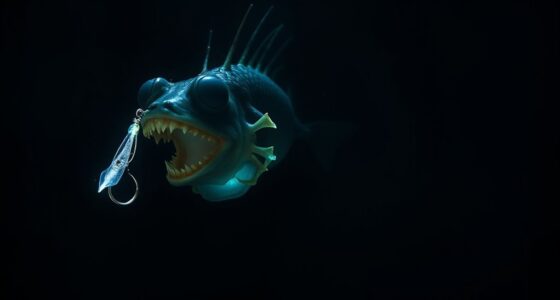Imagine encountering a creature that can regrow entire limbs and repair its spinal cord without scarring. The axolotl, often called the “walking fish,” has puzzled scientists for decades with its remarkable healing abilities. Its unique biology holds secrets that could transform medicine someday. But how does this aquatic marvel achieve such feats? The answers lie within its genetic makeup and cellular processes, inviting a closer look at what makes the axolotl so extraordinary.
The Unique Biology of the Axolotl
The axolotl’s biology is truly remarkable because it retains juvenile features throughout its life, a trait known as neoteny. Unlike other amphibians, it never undergoes full metamorphosis into a terrestrial adult. Instead, it stays aquatic, maintaining its gills and finned tail. This Water Requirements for Extra-Large Houseplants contributes to its ability to survive in its freshwater environment, constantly growing and developing without changing form. Its ability to produce both eggs and sperm throughout life makes it a prolific breeder.
The axolotl also has extraordinary regenerative abilities, but even without injury, its body remains in a larval-like state. Its transparent or dark-colored skin offers a glimpse into its internal organs, revealing an organism perfectly adapted to its aquatic niche.
This biology makes the axolotl a fascinating subject for scientific study.
How Regeneration Works in Axolotls
When an axolotl loses a limb, its remarkable regenerative abilities kick into action, allowing it to replace the lost tissue with new, fully functional structures. First, specialized cells called blastema cells form at the injury site. These cells are essentially de-differentiated, meaning they revert to a more primitive state, capable of becoming different tissue types. The blastema then begins to grow, guided by signals from nearby tissues and the nervous system. As it develops, cells differentiate into muscles, bones, nerves, and skin, reconstructing the limb layer by layer. This process is highly coordinated, ensuring the new limb matches the original in size, shape, and functionality. Researchers are also exploring digital sound synthesis techniques to better understand cellular communication patterns during regeneration. The axolotl’s ability to regenerate depends on precise cellular communication and controlled growth, which scientists are eager to understand fully.
Genetic Insights Into Limb Restoration
Recent advances in genetic research are shedding light on how axolotls achieve their extraordinary limb regeneration. Scientists have identified specific genes that activate during limb regrowth, such as those involved in cell proliferation, patterning, and differentiation. Notably, the genetic insights gained from studying these creatures reveal unique gene sequences that are absent in other species, which may explain their regenerative abilities. They also found that certain genes are turned on immediately after injury, orchestrating a complex molecular response. These genetic insights help explain how axolotls control precise tissue formation and avoid scar formation. Understanding these genetic mechanisms could eventually lead to breakthroughs in human regenerative medicine, offering hope for improved healing and tissue regeneration in humans.
The Role of Stem Cells in Regenerative Processes
Stem cells are at the heart of regenerative processes because they’ve the unique ability to develop into various specialized cell types. When injury occurs, these cells activate and proliferate, replacing damaged tissues efficiently. Biodiversity in ecosystems highlights the importance of diverse cell types working together for overall health. In axolotls, stem cells are responsible for forming new muscle, bone, and nerve tissues during limb regeneration. Unlike other cells, stem cells remain versatile, enabling the animal to rebuild complex structures. You can think of them as the body’s repair crews, ready to jump into action when needed. They communicate with surrounding cells, coordinate tissue growth, and ensure the correct formation of new limbs. This incredible flexibility is what makes the axolotl a scientific marvel and a key focus in regenerative research.
Environmental Factors Affecting Axolotl Healing
Environmental conditions play a crucial role in the axolotl’s ability to heal effectively. Temperature, water quality, and oxygen levels directly impact their regenerative processes. AI detection methods are increasingly used to monitor water quality and ensure optimal conditions for aquatic life. Temperature fluctuations can significantly influence cell growth and tissue regeneration. Poor water quality, with high levels of toxins or pollutants, can stress the axolotl and hinder healing. Adequate oxygenation is essential; low oxygen levels can reduce metabolic activity, delaying tissue repair. You must ensure clean, well-maintained aquatic habitats with stable temperatures and proper aeration to support optimal healing. Changes in environmental conditions can cause stress or illness, impairing regeneration.
Challenges in Harnessing Axolotl Regeneration for Medicine
While the axolotl’s remarkable ability to regenerate tissues offers exciting potential for medicine, translating this natural process into human therapies presents significant obstacles. One major challenge is understanding the complex biological mechanisms behind axolotl regeneration. These processes involve unique gene expressions and cellular behaviors that don’t occur naturally in humans. Additionally, replicating such regenerative signals safely in humans raises concerns about uncontrolled cell growth or tumor formation. Researchers also face difficulties in developing techniques to activate similar regenerative pathways without causing harm. Moreover, the genetic and immune differences between axolotls and humans complicate direct application. Understanding color accuracy and how it influences biological processes could provide insights into controlled regeneration. Overcoming these hurdles requires extensive research, advanced technology, and careful testing before we can harness axolotl regeneration for effective, safe medical treatments.
Breakthroughs in Laboratory Research
Recent breakthroughs in laboratory research have brought us closer to unlocking the secrets of axolotl regeneration. Scientists have identified key genes and molecular pathways that enable these creatures to regrow limbs, spinal cords, and even parts of their hearts.
Advanced gene editing tools, like CRISPR, allow researchers to manipulate specific genes, revealing which ones are essential for regeneration.
Additionally, studies on axolotl immune responses have uncovered how their immune system supports tissue regrowth without scarring.
Researchers are also developing in vitro models to study axolotl tissues, making experiments more efficient.
These innovations accelerate understanding of regenerative biology and open new avenues for translating axolotl insights into human medicine. Your efforts are helping unlock the potential of regenerative therapies for the future. Fetal development is a complex process that shares some molecular mechanisms with limb regeneration, providing additional insights for researchers.
Future Directions and Potential Human Applications
Advances in understanding axolotl regeneration are paving the way for transformative human therapies. Researchers are exploring ways to apply these insights to improve wound healing, treat degenerative diseases, and even regenerate complex tissues like limbs or organs.
By identifying the genetic and molecular mechanisms that enable axolotls to regrow entire body parts, scientists hope to develop regenerative medicine techniques that could one day restore lost functions in humans. This includes harnessing stem cells, stimulating cellular growth, and controlling scarring.
While challenges remain, ongoing research offers hope that, in the future, regenerative treatments inspired by axolotls could revolutionize healthcare, reduce the need for transplants, and improve quality of life for millions.
Your understanding of these developments highlights the promising potential of this remarkable “walking fish.”
Conclusion
By studying the axolotl, you unlock secrets of incredible regeneration that could transform medicine. Its ability to heal without scars and regrow entire limbs shows what’s possible with nature’s design. As research advances, you may someday see these insights lead to breakthroughs in human tissue repair and organ regeneration. The axolotl’s unique biology offers hope for a future where injury recovery becomes faster, better, and scar-free, making it a true marvel of science.






